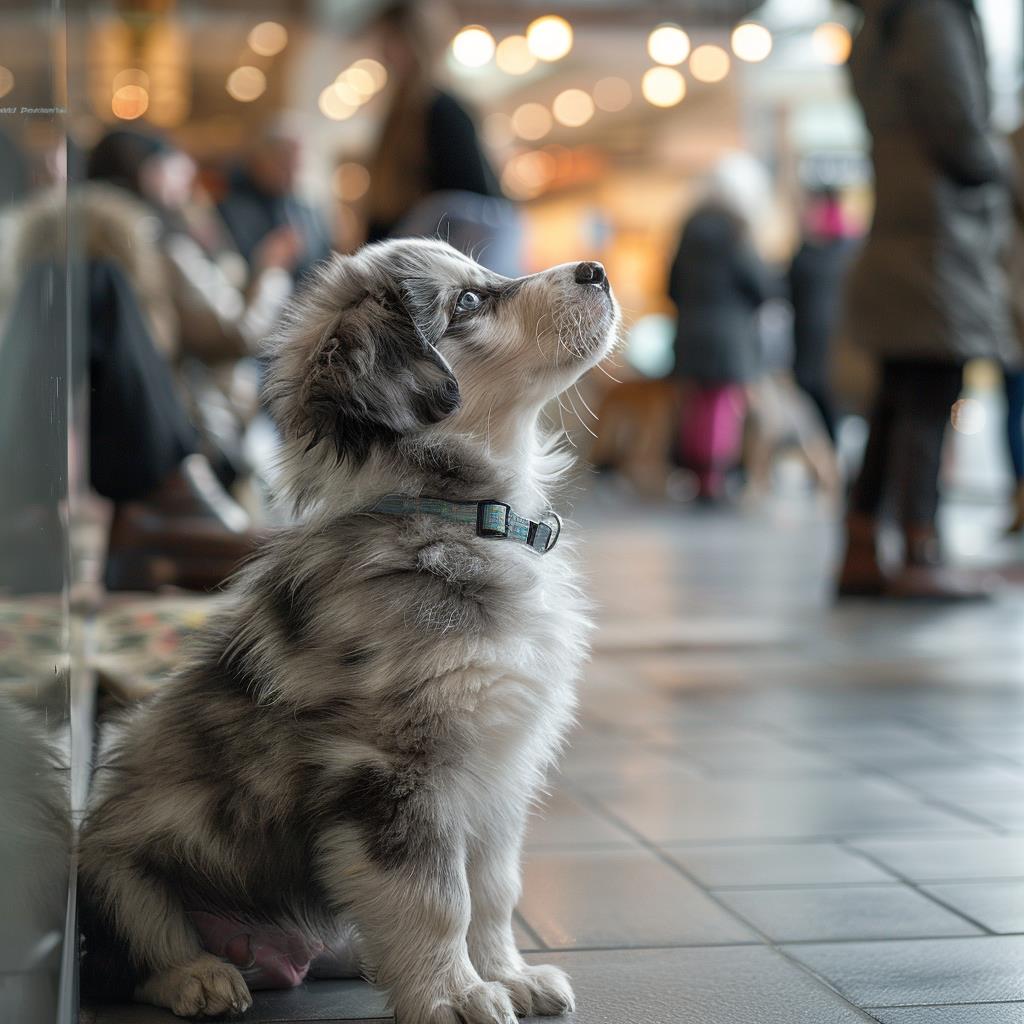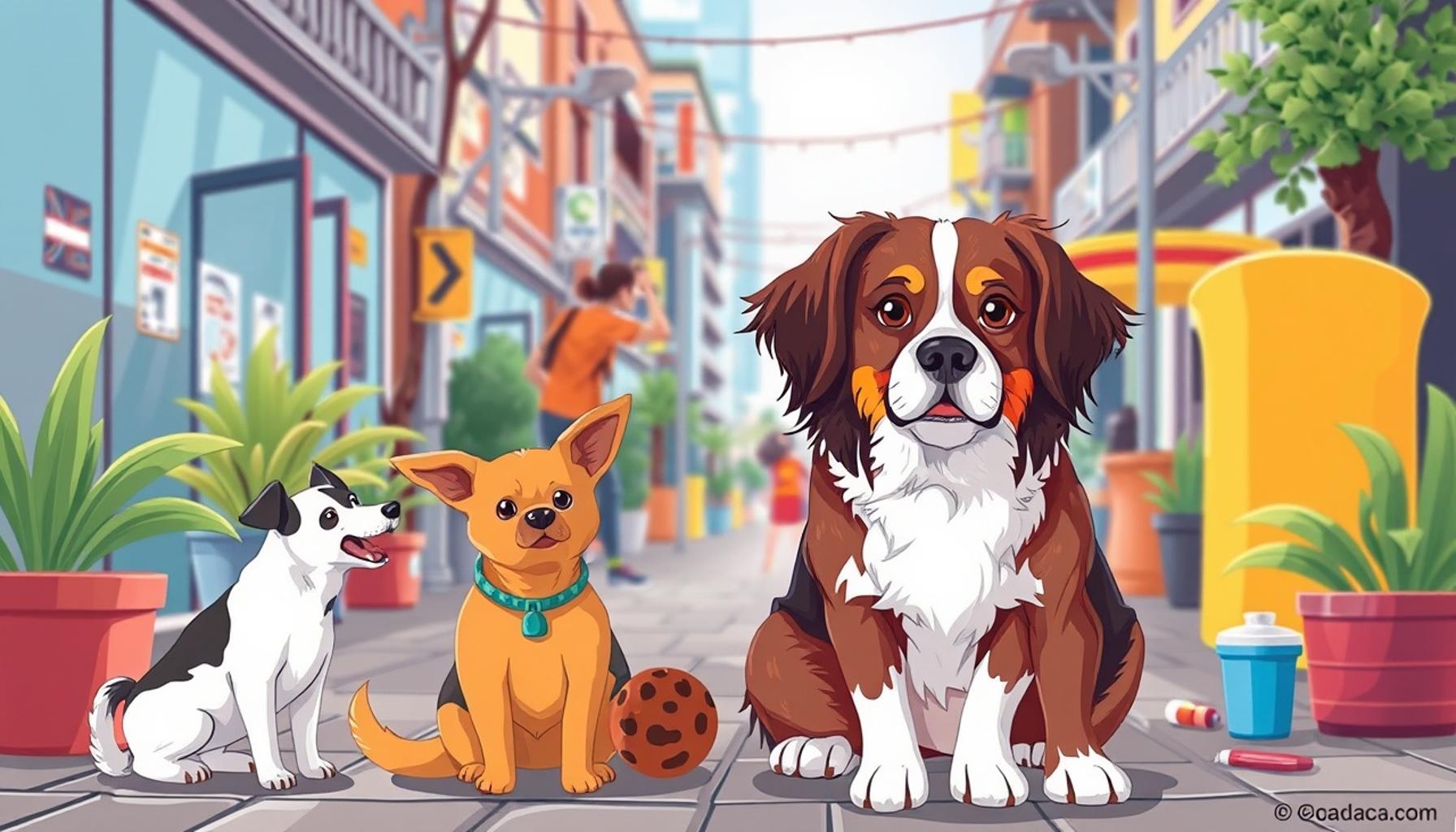The Importance of Socialization in Dog Training: Tips and Techniques

The Importance of Socializing Your Dog
Socializing your dog is not merely a beneficial aspect of training; it is a crucial element for nurturing a well-adjusted canine companion. A lack of proper socialization can lead to a host of behavioral issues, such as anxiety and aggression, which may manifest in various distressing ways, including fear-based reactions or unwarranted hostility towards strangers or other animals. Understanding the significance of socialization can not only transform your dog’s behavior but can also enhance its interactions with the environment and the people around it.
Key Benefits of Dog Socialization
Socialization offers numerous advantages that contribute to a dog’s overall well-being. Below are some of the key benefits:
- Reduces Fear: By exposing your dog to a range of environments, people, and various kinds of animals, you can help it minimize fear and anxiety in unfamiliar situations. For instance, taking your dog to a bustling park or busy street teaches it to remain calm amidst noise and crowds. This exposure allows your dog to learn that there is nothing to fear, which is crucial for their emotional stability.
- Improves Behavior: A well-socialized dog is less likely to exhibit undesirable behaviors, such as excessive barking or jumping on strangers. When your dog learns to greet people gently and respond positively to new situations, it reflects in more desirable conduct. For example, a dog accustomed to interacting with other canines can play appropriately instead of becoming aggressive or frightened.
- Strengthens Bond: Socialization enhances the bond between you and your pet, fostering trust and improving communication. As you guide your dog through social experiences, you are teaching it to rely on you for safety and reassurance, which deepens your relationship.
The Critical Window for Socialization
In the United States, many dog trainers advocate for early socialization during the critical developmental window, usually between 3 and 14 weeks of age. During this period, puppies are particularly receptive to new experiences, making it an ideal time for exposure to various stimuli. However, it is important to remember that it’s never too late to start socializing your dog. Adult dogs can still learn new behaviors and adapt to different situations, although the process may take more time and patience.
Effective Tips for Successful Socialization
In the following sections, we will delve into effective tips and techniques designed to ensure your dog’s successful socialization. From enrolling in structured training classes to incorporating simple at-home practices, each method aims to equip your furry friend with the confidence and social skills necessary for a friendly disposition. Additionally, exploring local dog meet-ups or playgroups can further provide practical opportunities for socialization. By actively engaging in your dog’s social development, you can create a happier, healthier pet and a more harmonious household.
In essence, the journey of socializing your dog is not just a training exercise but a significant aspect of responsible pet ownership that lays the groundwork for a fulfilling relationship between you and your canine companion.

DISCOVER MORE: Click here to learn effective training techniques
Effective Tips for Successful Dog Socialization
Embarking on the journey of dog socialization may seem daunting, but with the right tips and techniques, you can create a positive experience for your furry friend. Success in socialization not only hinges on the environments you expose your dog to, but on your approach to those experiences. Here are several strategies to foster effective socialization:
Start with Controlled Environments
Before plunging into the chaotic world of parks, parties, or bustling city streets, begin socialization in controlled environments. This could involve inviting friendly dogs over to your home or visiting a friend’s house with a calm pet. The familiarity of a home setting allows your dog to explore and engage without the overwhelming distractions of the outside world. Gradually increase exposure to more stimulating environments as your dog gains confidence.
Use Positive Reinforcement
Encouragement goes a long way in dog training, especially during socialization. Utilize positive reinforcement techniques such as treats, praise, and playtime to reward your dog for calm behavior in social settings. For instance, if your dog remains relaxed while meeting a new person or animal, provide a small treat and a celebratory pat. This approach helps your dog associate social encounters with positive outcomes, making them more likely to approach new situations with eagerness rather than fear.
Introduce New Experiences Gradually
When socializing your dog, it is important to introduce new experiences gradually. Sudden exposure to loud noises, busy environments, or large crowds can be overwhelming. Instead, break down these experiences into manageable segments. Incrementally desensitize your dog by exposing it to new sights, sounds, and smells over time. You might start with a quiet park visit before moving on to a dog event or pet-friendly café.
Enroll in a Socialization Class
Consider enrolling your dog in a structured socialization class led by a professional trainer. These classes often provide a safe and supervised environment where dogs can interact with one another under the guidance of an experienced instructor. This controlled setting allows you to learn effective techniques for managing your dog’s behavior while watching them socialize with their peers. Additionally, you will gain valuable insights into reading canine body language, which can be key to preventing negative interactions.
Engage in Regular Outings
Routine outings should be an integral part of your socialization strategy. Regular visits to different locations such as pet stores, parks, or dog-friendly beaches can dramatically broaden your dog’s experiences. Each outing exposes your canine companion to various stimuli, from the smells of different environments to the sounds of children playing. Remember to keep these trips fun and rewarding, as positive memories will encourage your dog to embrace new adventures with enthusiasm.
By implementing these effective tips, you will be well on your way to fostering a well-socialized dog. This socialization not only promotes a friendly disposition but also provides your pet with the essential skills to navigate the world confidently, ultimately enriching your lives together.
| Advantage | Description |
|---|---|
| Improved Behavior | Socialization helps dogs learn how to behave appropriately in various situations, reducing anxiety and fear. |
| Enhanced Adaptability | Well-socialized dogs are more adaptable to new environments and experiences, which is crucial for a happy and balanced life. |
| Better Communication | Socialization encourages dogs to communicate more effectively with their owners and other pets, leading to a more harmonious household. |
| Stronger Bond | Socialization activities often lead to a deeper bond between dogs and their owners, enhancing mutual trust and affection. |
Socialization in dog training is not merely an optional step; it is a fundamental aspect that shapes a dog’s life experience. An improved behavior is often observed in dogs that have undergone proper socialization, leading to reduced instances of destructive actions stemming from anxiety or fear. In addition, socialized dogs exhibit enhanced adaptability, thriving in diverse environments, from bustling parks to quiet neighborhoods, thereby ensuring their happiness and well-being. Such training benefits not only the dog’s behavior but also reinforces the bond between pet and owner through shared experiences, promoting better communication and understanding. This fosters a supportive atmosphere where canines feel safe and secure. Moreover, by participating in socialization activities, owners can cultivate a stronger bond with their pets, building a relationship founded on trust and companionship. Understanding these multifaceted advantages underscores the importance of prioritizing socialization during dog training.
DON’T MISS: Click here for essential nutrition tips
Understanding Canine Body Language
A vital component of successful socialization is understanding canine body language. Dogs communicate a wealth of information through their posture, facial expressions, and tail position. For instance, a wagging tail does not always signify happiness; the speed and height of the wag can indicate a range of emotions from excitement to agitation. By learning to read these signals, you can better interpret your dog’s comfort level in various situations, allowing you to intervene or redirect as necessary. Understanding your dog’s cues will also help you recognize when to introduce your dog to new experiences and when to take a step back.
Supervise All Interactions
Active supervision during social interactions is crucial for ensuring positive experiences. If your dog is meeting another dog, always be vigilant, particularly if the other dog is larger or more boisterous. Being aware of the dynamics at play allows you to step in if you sense tension building. Employing a monitored approach not only keeps your dog safe but also fosters a positive learning environment where they can feel secure while navigating social situations. Engage with your dog during these interactions, allowing them to rely on you as a source of guidance and comfort.
Consider the Vital Role of Early Experiences
Research highlights that early life experiences significantly impact a dog’s behavior as they grow. The critical socialization period for puppies is between 3 and 14 weeks of age. During this time, exposing your puppy to safe and varied social situations is vital for developing a well-adjusted adult dog. Just as children benefit from diverse interactions in their formative years, puppies thrive in environments that introduce them to new people, pets, and experiences. If you adopt an older dog, it’s important to know that while they may not have had ideal socialization as a puppy, it’s never too late to start creating positive experiences.
Utilize Group Walks and Playdates
Group walks and playdates can serve as excellent opportunities for socialization. These social outings allow dogs to interact and engage in the natural behaviors of canine socialization, such as play fighting and exploring together. Such activities not only help build your dog’s confidence but also promote a better understanding of dog etiquette. By observing and participating in these group situations, your dog will learn appropriate responses to various stimuli, contributing to a healthier social disposition. Consider organizing playdates with dogs that are well-mannered and compatible with your dog’s temperament.
Dealing with Fear and Anxiety
Some dogs may struggle with fear and anxiety, making socialization more challenging. It is essential to approach the process with extra sensitivity in these cases. Building trust and confidence is crucial, which can be done through counter-conditioning techniques. For example, if your dog is afraid of strangers, gradually introduce them to new people from a distance where they feel comfortable, rewarding them for calm behavior. Over time, as their confidence grows, you can decrease the distance while continuing to reward and reassure them. This patient approach helps desensitize them to their fears.
By integrating these strategies into your dog’s socialization training, you will create a more enjoyable process for both you and your pet. Empowered with knowledge and techniques, you can facilitate positive interactions that benefit your dog’s mental and emotional well-being, enriching their social experiences and enhancing your bond together.
DISCOVER MORE: Click here to learn effective training techniques for your cat
Conclusion
In conclusion, the importance of socialization in dog training cannot be overstated. It is foundational for shaping a well-adjusted canine companion who thrives in various environments. By understanding your dog’s unique body language, actively supervising interactions, and providing enriching early experiences, you create a framework that encourages positive behaviors. When dogs learn through interactions—whether during group walks, playdates, or meetings with new people—they gain valuable skills that contribute to their overall development and emotional well-being.
Furthermore, recognizing and addressing issues of fear and anxiety through tailored approaches such as counter-conditioning ensures that all dogs, regardless of their past experiences, can grow into sociable and confident pets. It is vital to remember that socialization is an ongoing process. The journey of nurturing a socially adept dog is filled with opportunities to build trust and enhance your bond.
As you engage with your dog through diverse experiences, you set the stage for a more fulfilling life together, characterized by mutual understanding and companionship. With patience and knowledge, you can navigate the complexities of canine behavior, ultimately leading to a happier, healthier, and well-socialized dog.
To delve deeper into the topic, consider seeking resources like training classes, workshops, and literature on canine behavior that can further aid you in this critical aspect of dog ownership. Your commitment to socialization not only enriches your dog’s life but also enhances the harmony in your home and community.



